Hazelnut care and growing guide: introduce these trees to your backyard
Find out how to grow hazelnut trees for their tasty nuts but also to help wildlife and as useful providers of home-grown plant supports

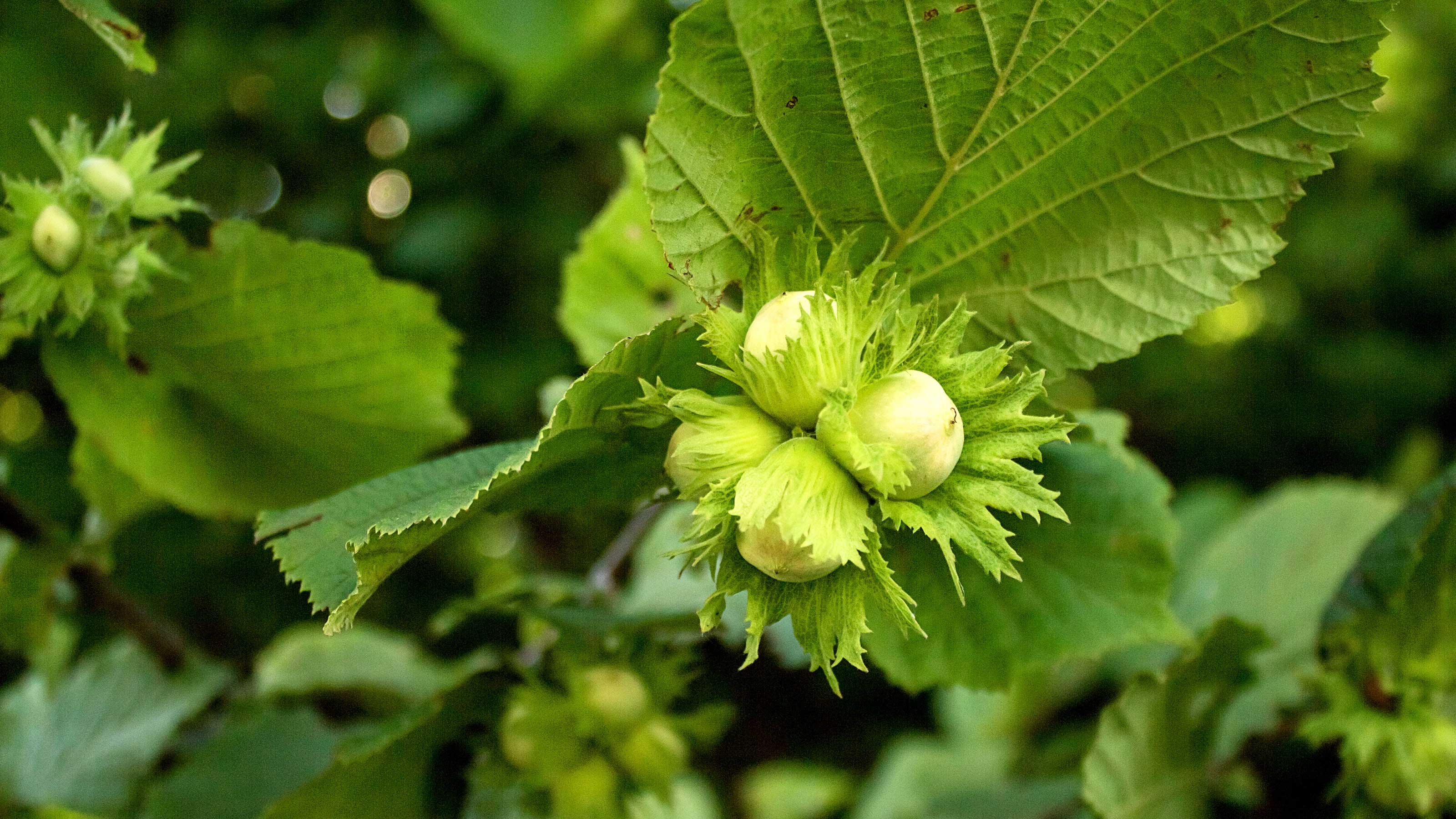
The hazelnut is from the birch family Betulaceae with a natural distribution across the Northern hemisphere. They are large shrubs or small trees. ‘Very rarely, however, does the plant achieve the proportions of a tree,' observed the botanist and author L.J.F. Brimble in 1948, 'for it produces so many suckers from its roots that the entire plant looks like a very large shrub.'
Plants come to life in late winter or early spring when male flowers open in dangling catkins. These dance and jiggle in the wind like lamb’s tails, releasing clouds of yellow pollen into the air. Look closely and you’ll spot the female flowers, whose small wine-red stigmas project from bud-like structures ready to catch pollen. Clusters of nuts form, each enclosed in two pale green leafy bracts. When these mature from mid-summer to mid-fall, there is a race as squirrels, deer and other wildlife seek out the tasty nuts, often starting on them while underripe.
Whether grown in the landscape or as a backyard tree, hazelnuts have gentle good looks, and are easy to grow.
- Buy hazelnut trees in the US: view at Nature Hills
- Buy hazelnut trees in the UK: view at Thompson & Morgan
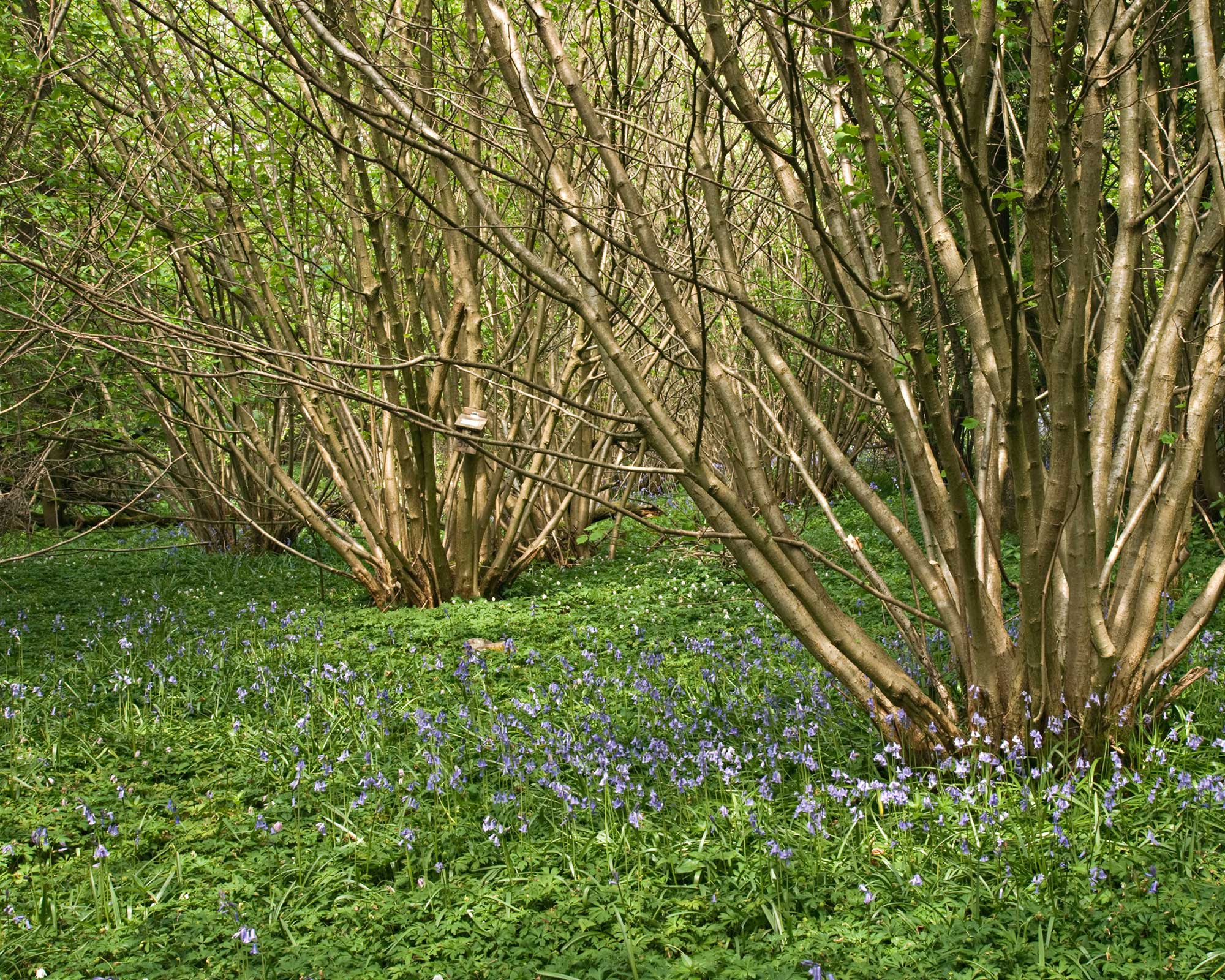
Hazelnut key facts:
- Plant type: Nut-bearing large shrub or small tree
- Mature size: Height: 8-16ft (2.5-5m) Spread: 15ft (4.5m)
- Soil type: Most well-drained soils
- Soil pH: Ideally neutral to alkaline
- Time of year to plant: Fall
- Flowering time of year: Late winter to mid spring
- Flower color: Male catkins are dark in bud but pale yellow when open. Female flowers are deep red.
- Hardiness zones: USDA 4-9 (UK H6)
- Scientific name: Corylus
- Common name: Hazelnut
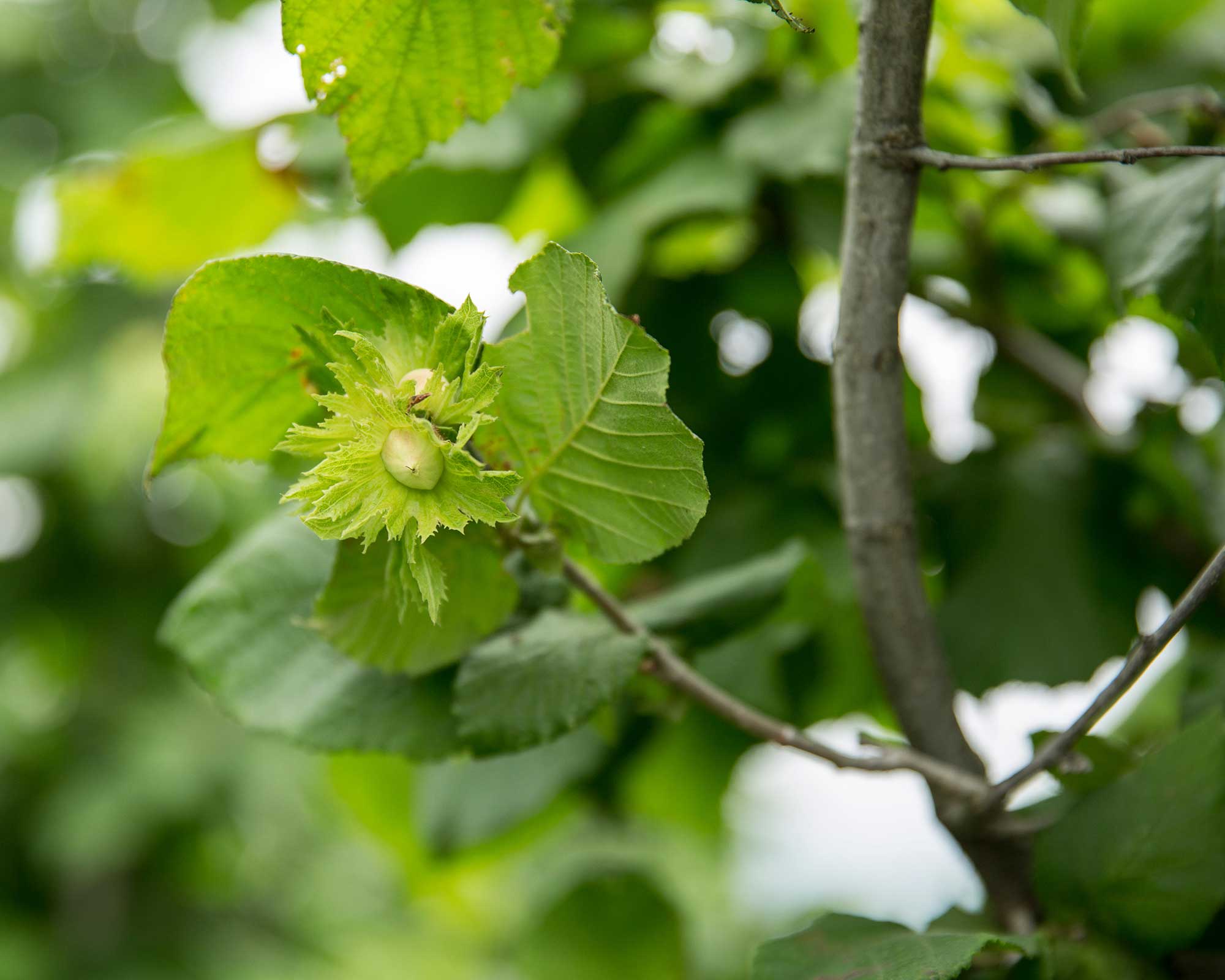
Different types of hazelnut trees
There are 14-18 species in the hazel genus Corylus, including American hazel (C. americana) native to the Eastern side of the US and the North American beaked hazel (C. cornuta).
The European hazel or cobnut (C. avellana) is widespread in the landscape and gardens of the UK. The name hazel derives from the Anglo-Saxon word haesel, meaning bonnet, because of the way the nuts seem to peek from their husks.
The filbert (C.maxima) bears long, elegant nuts and grows wild in southeastern Europe and southwest Asia.
The nuts of American hazels are smaller and some say less flavorsome than those of the European hazel. They have the advantage of resistance to eastern filbert blight – but can still carry the disease and spread it to the vulnerable European hazel. For a long time, the latter were grown commercially on the milder, western side of the US, well-isolated from the natural populations of American hazelnuts, but filbert blight is now a problem. Fortunately, breeding work to produce hardy, disease-resistant hybrids with large tasty nuts has been going on since the 1920s and nut farms still prosper, mainly in Oregon.
For wildlife gardens, the American hazelnut is a great choice. For the best edible nuts, look for cultivars with good blight and bud mite resistance.
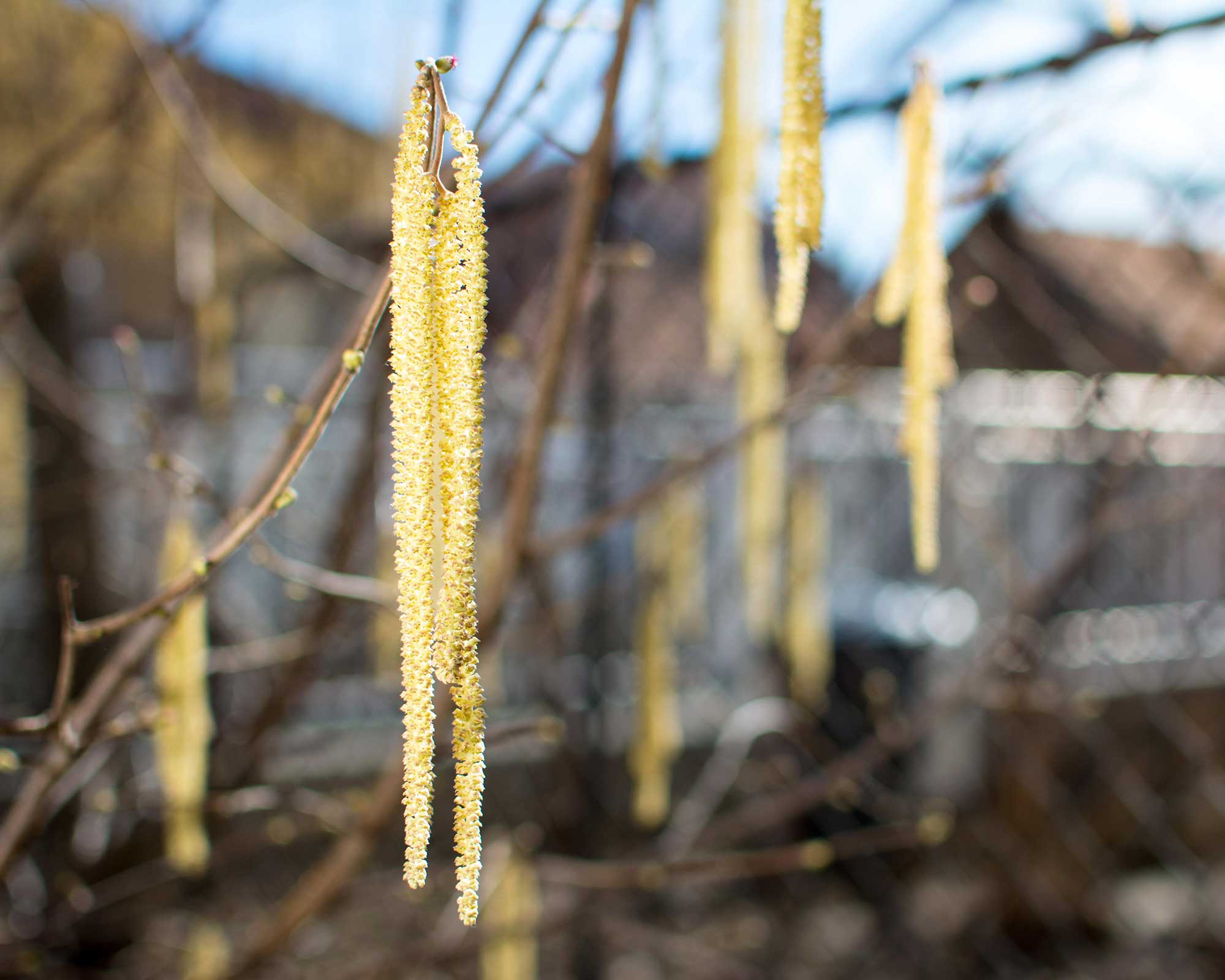
Cultivars for US gardeners:
- ‘Dorris’: With complete resistance to eastern filbert blight, this compact hazel bears plenty of rounded, good-sized, tasty nuts. H and S: 8-12ft (2.4-3.5m). USDA 5.
- ‘Polly O’: This high-yielding blight and bud-mite-resistant type produces rounded, medium-sized flavorsome nuts. H and S: 8-12ft (2.4-3.5m). USDA 5.
- ‘Red Dragon’: More ornamental than productive, this eastern-filbert-blight-resistant twisted hazel bears contorted, spiraling stems, red leaves, burgundy catkins and red nut husks. H and S: 6ft (1.8m). USDA 4-9.
- ‘York’: Resistant to blight and bud mite, this compact cultivar produces nuts of average size and is generally a good pollinator. H and S: 8-12ft (2.4-3.5m). USDA 5.
Cultivars for British gardeners:
- Corylus avellana ‘Cosford’: A self-fertile cobnut well-loved for heavy crops of large, long, sweet nuts with thin shells. It is also a good pollinator. H and S: 8-12ft (2.4-3.5m). UK H6.
- Corylus avellana ‘Tonda di Giffoni’: A compact, Italian variety with extra-long catkins perfect for smaller gardens. Expect plentiful crops of large nuts. H and S: 6-8ft (1.8-2.4m). UK H4.
- Corylus x maxima ‘Kentish Cob’: Also known as Lambert’s filbert. This hardy, reliable and self-fertile variety produces flavorsome, fine-textured nuts. H and S: 8-12ft (2.5-3.5m). UK H6.
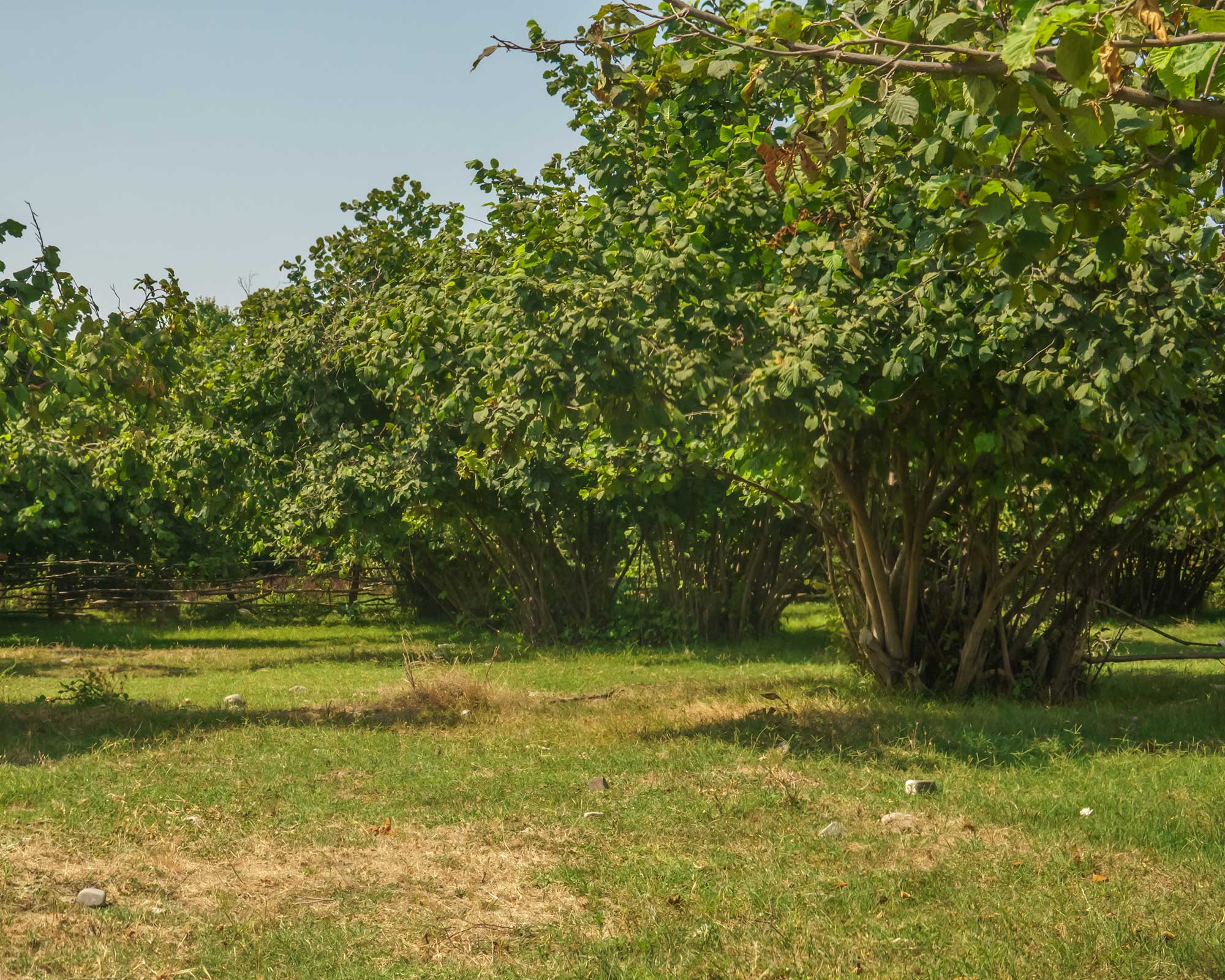
How to use hazelnut trees in your yard
With its wavy-margined, heart-shaped leaves turning yellow, orange and burgundy in fall; spring show of catkins; and frilly nut cases, the American native hazelnut suits wildlife-friendly gardens and makes an excellent hedging plant.
If you have the space, plant a nuttery with several hazels set at least 12ft (3.6m) apart and pruned for shapeliness. The dappled shade cast by their leaves will suit a ground cover of woodland plants and spring bulbs.
The European hazel is similarly useful in UK gardens, where they don’t suffer from major pests or diseases. Many plots now have a corner that has been rewilded, where a regularly coppiced hazel will yield plenty of plant supports. In our large garden, we have a small ‘wilderness’ where trees have been left to regenerate naturally and shade out brambles. This quiet, undisturbed area is a refuge for wildlife and hazels grow from nuts cached by gray squirrels – I often think they plant them on purpose to propagate one of their favorite foods.
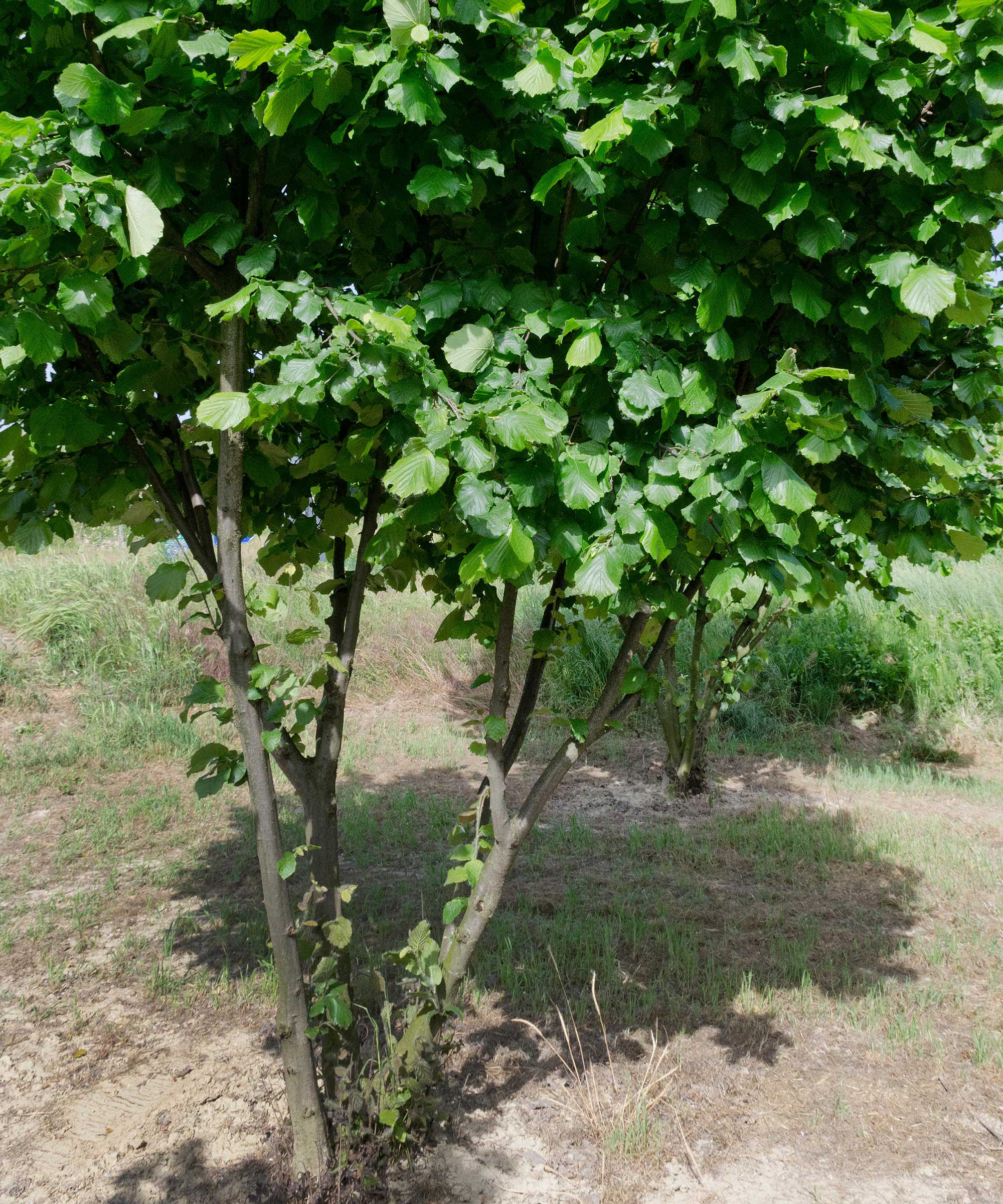
When, where and how to plant a hazelnut tree
Plant new hazelnut trees in the fall when the soil is moist but neither wet nor frozen. They grow well on a wide variety of soil types, as long as they are not waterlogged. Avoid, if you can, rich soils – these tend to favor leafy growth over nut production.
Although they can grow in sun, light shade with a few hours of direct sun is a better choice in drier areas where prolonged droughts are common.
Before starting, make sure the roots are thoroughly moistened. If they're dry, soak them in a bucket of water. Plants in pots should have their roots teased out of the pot shape.
Dig a square hole as deep as the rootball and twice as wide, and place the plant in carefully so it's exactly the same depth as it was in the nursery bed or pot. Then, fill in, firming as you go. Water in well and during droughts until it's established.
Space trees at least 12-20ft apart (3.6-6m) so they have room to develop.
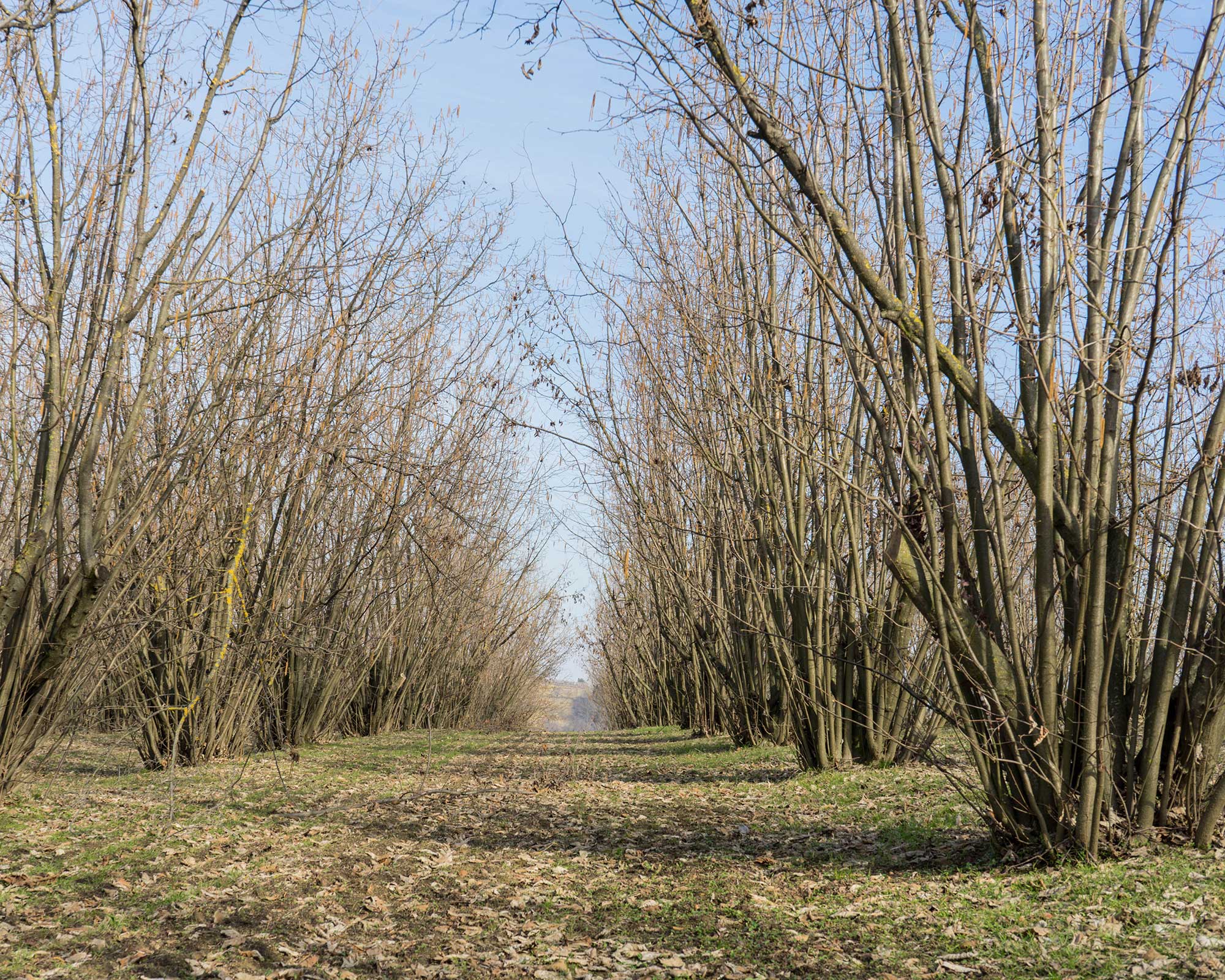
Pruning and training hazelnuts
Leaving hazels to develop a multi-stemmed thicket is an option, but they respond well to pruning. Most gardeners reduce the number of stems by thinning them down to around eight branches from mid-winter to early spring using loppers and a folding pruning hand saw. We like the look of this Corona model, available on Amazon.
Once your hazel is five years old, the Nature Hills Nursery website recommends regular renewal pruning by removing a third of the oldest, fattest stems right down to the ground every three to four years. 'Allow the younger thinner stems to remain,' they add. This process can encourage nut production.
Once every five to ten years or so, you can coppice the entire tree. This means taking a saw to overgrown plants while they are dormant and cutting all the stems almost to ground level – within 5-7.5cm (2-2½in) from the ground, says the RHS. Light floods into their space and new growth soon appears. Regularly coppiced plants provide good, straight stems perfect as climbing plant supports, especially for pole beans.
To grow trees on a short stem, prune the leader to 18-36in (45-90cm) in the winter after planting. During summer, remove unwanted lower laterals and shorten the rest by a third. In winter, shorten long stems by half and remove suckers, holding in mind the intended shape of an open-centered plant with around five well-placed leaders. During the first couple of years, cut leading shoots by half to develop a dense framework.
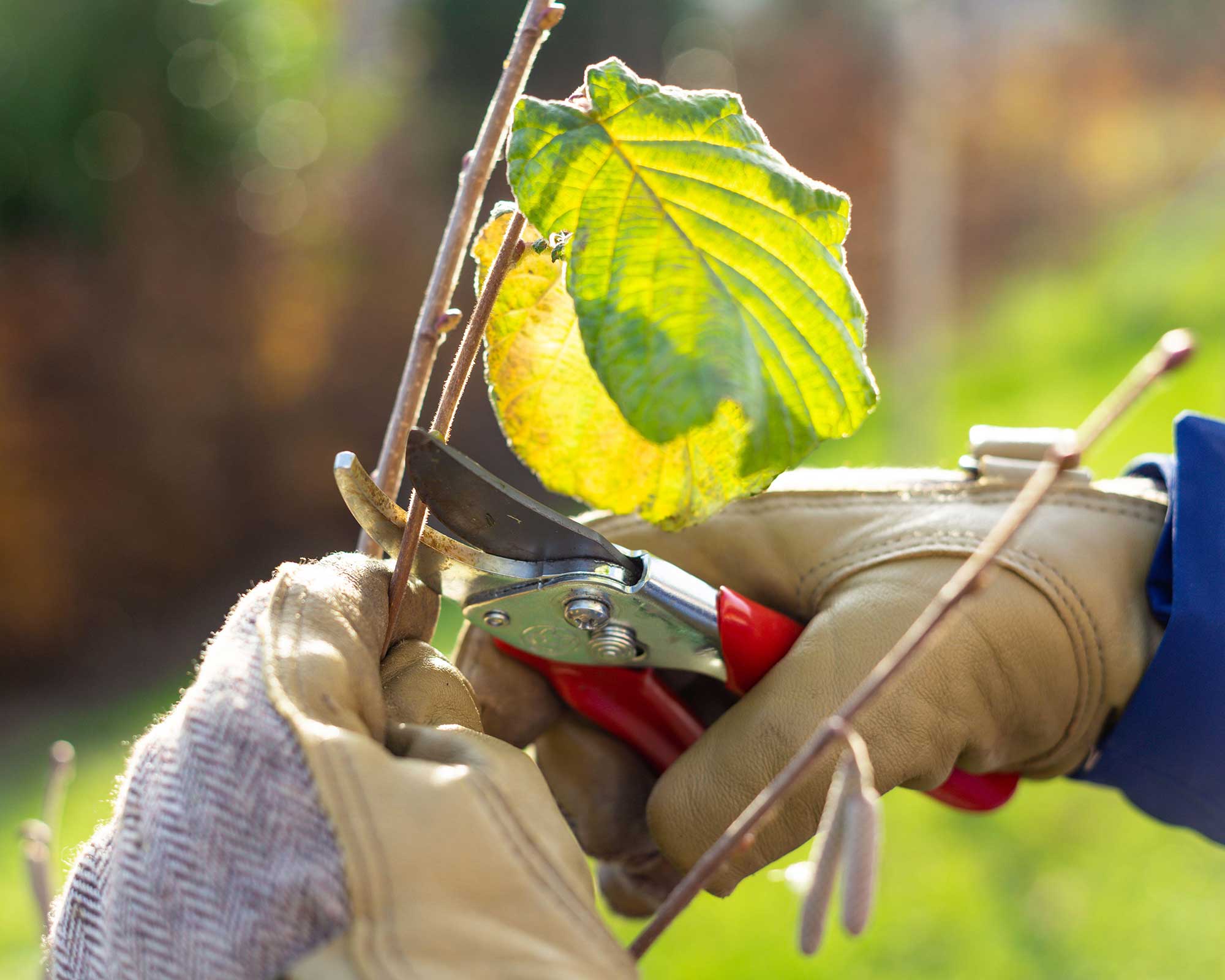
How to make more hazelnut trees
Everyone loves free plants, and it's quite possible to make more hazelnuts from an existing shrub or tree.
The simplest and cheapest method of introducing hazelnuts to your plot is by sowing seeds, preferably from local trees acclimatized to their surroundings. Plant 1in (2.5cm) deep into pots of good seed compost (there is plenty available on Amazon) in fall and place in a cold, airy and covered place where they will not get too wet. Seedlings should appear in spring.
However, cultivars will not come true from seed and are usually propagated by layering. Plants are prepared by cutting them down to promote lots of new stems, but if there are a number of young suckers, this may not be necessary. Heap good soil around the base of the young stems in early summer. After a year, the suckers should have rooted into this while attached to the mother tree. In fall, cut each layer below the roots and pot up or plant out. Alternatively, bend a long sucker to the ground, make a cut on the underside, and peg it down to root.
Grafting is possible, but in the US, would require a blight-resistant rootstock. The rootstocks are also prone to suckering and these would be a different cultivar from the one grafted on top.
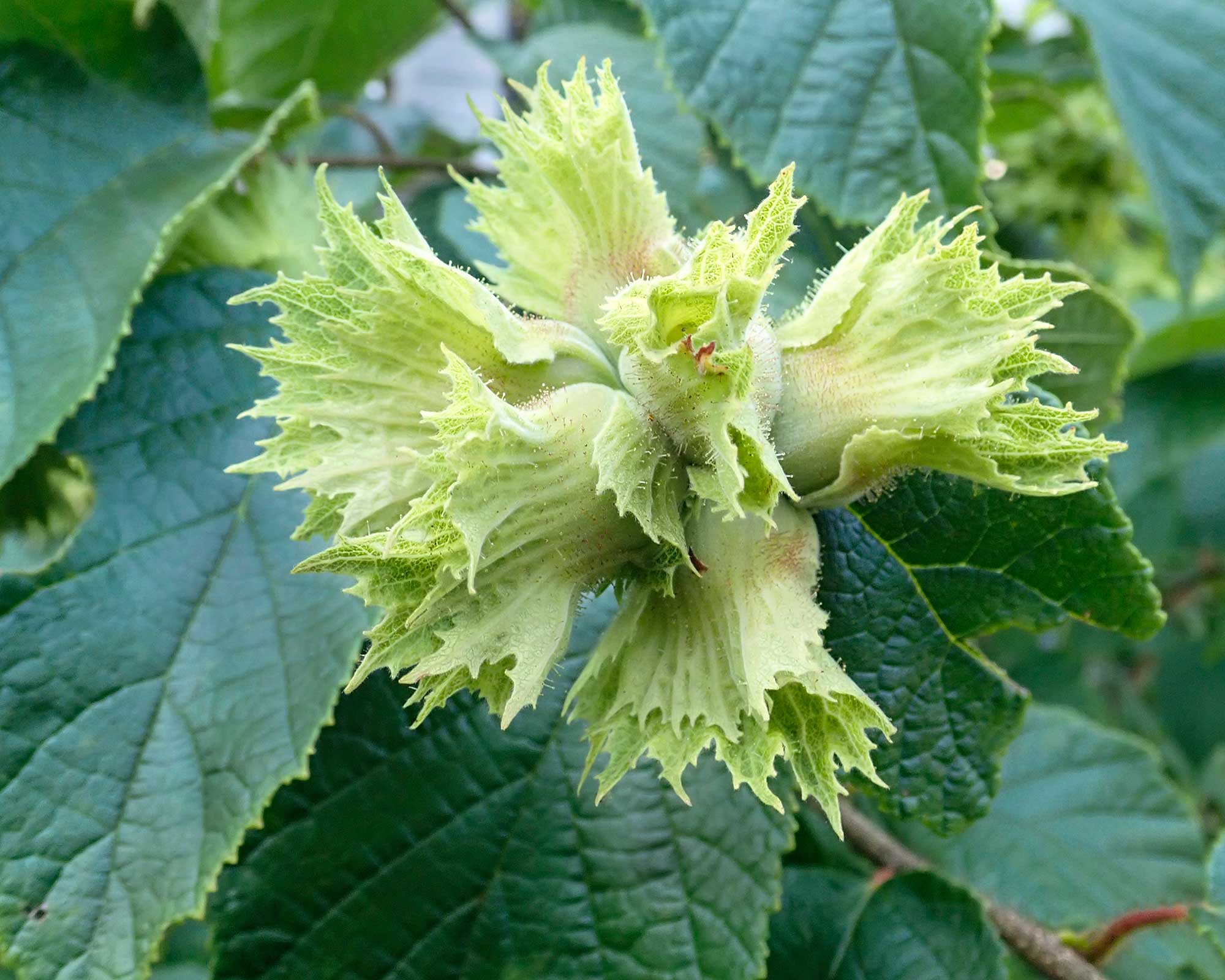
Common problems with hazelnut trees
Hazels are easy to grow but where deer, squirrels and rabbits are a problem, use guards or repellent sprays to protect young trees while they establish.
To keep squirrels from taking nuts, try planting a tree in isolation (but with pollinators nearby). Train it to produce branches from a single trunk and fix the trunk with a metal collar.
In the US, filbert worms or acorn moths will overwinter as larvae in the soil. The adults lay eggs on hazelnut husks in spring and larvae enter to feed on the nuts. Increase biodiversity to encourage parasitic wasps. Pheromone traps are available to attract and trap male moths.
Microscopic bud mites can cause distortion. Look for resistant varieties.
Eastern filbert blight (Anisogramma anomala) causes wilting, dieback and raised lumps of infected tissue, known as cankers. Slightly raised football-shaped spore-bearing structures develop on branches. To avoid this, grow American hazelnuts or disease-resistant cultivars.
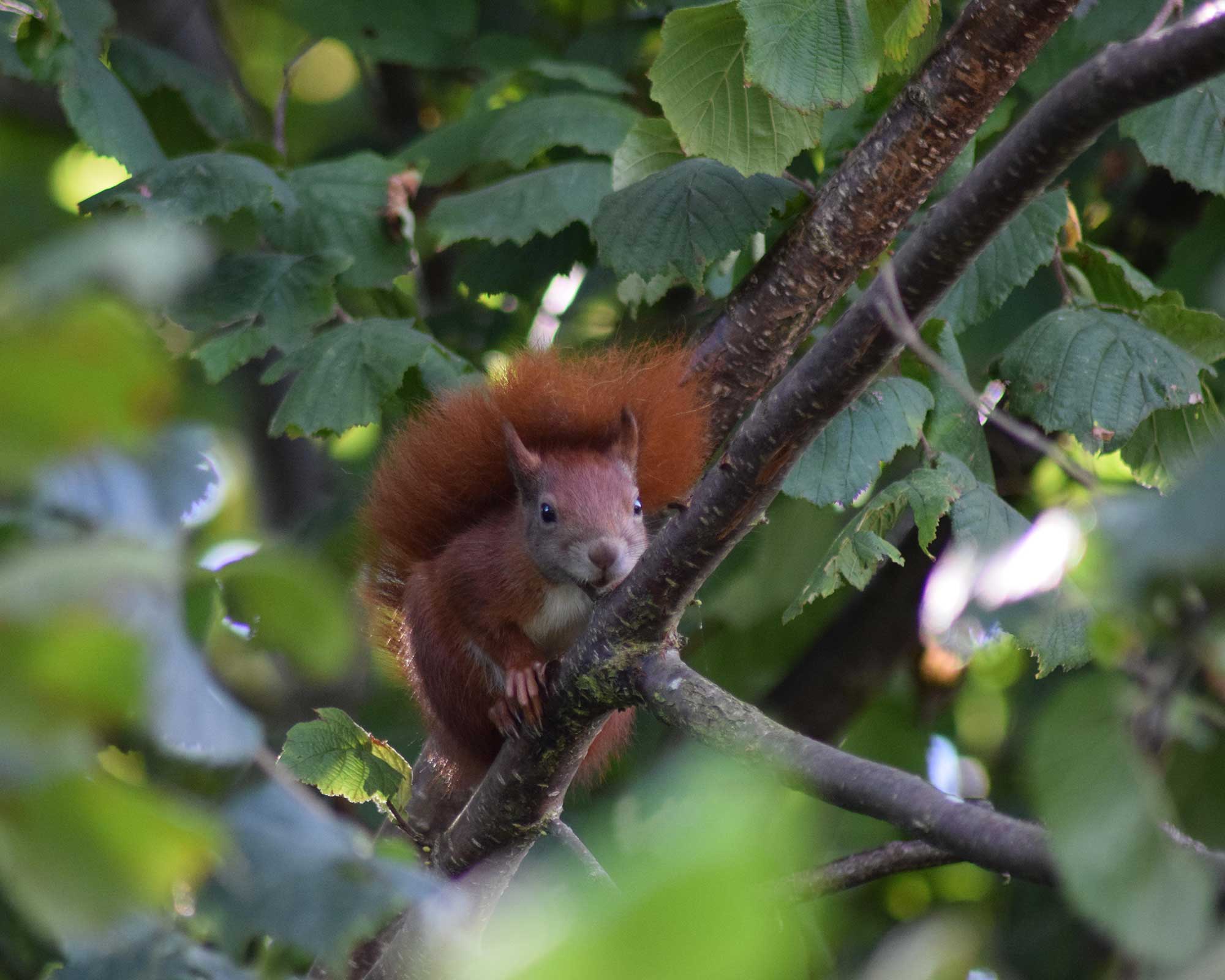
Can you eat hazelnuts from the tree?
Fresh green hazelnuts straight from the tree are a delicious treat. They are crunchy but moister than dried nuts and with a fresh flavor.
It is tempting to harvest nuts early to beat the squirrels, but unripe kernels tend to wither in the shell. For the main crop, pick ripe nuts, lay them out for the husks to dry, and store them in a cool, dry, place that's free of rats.
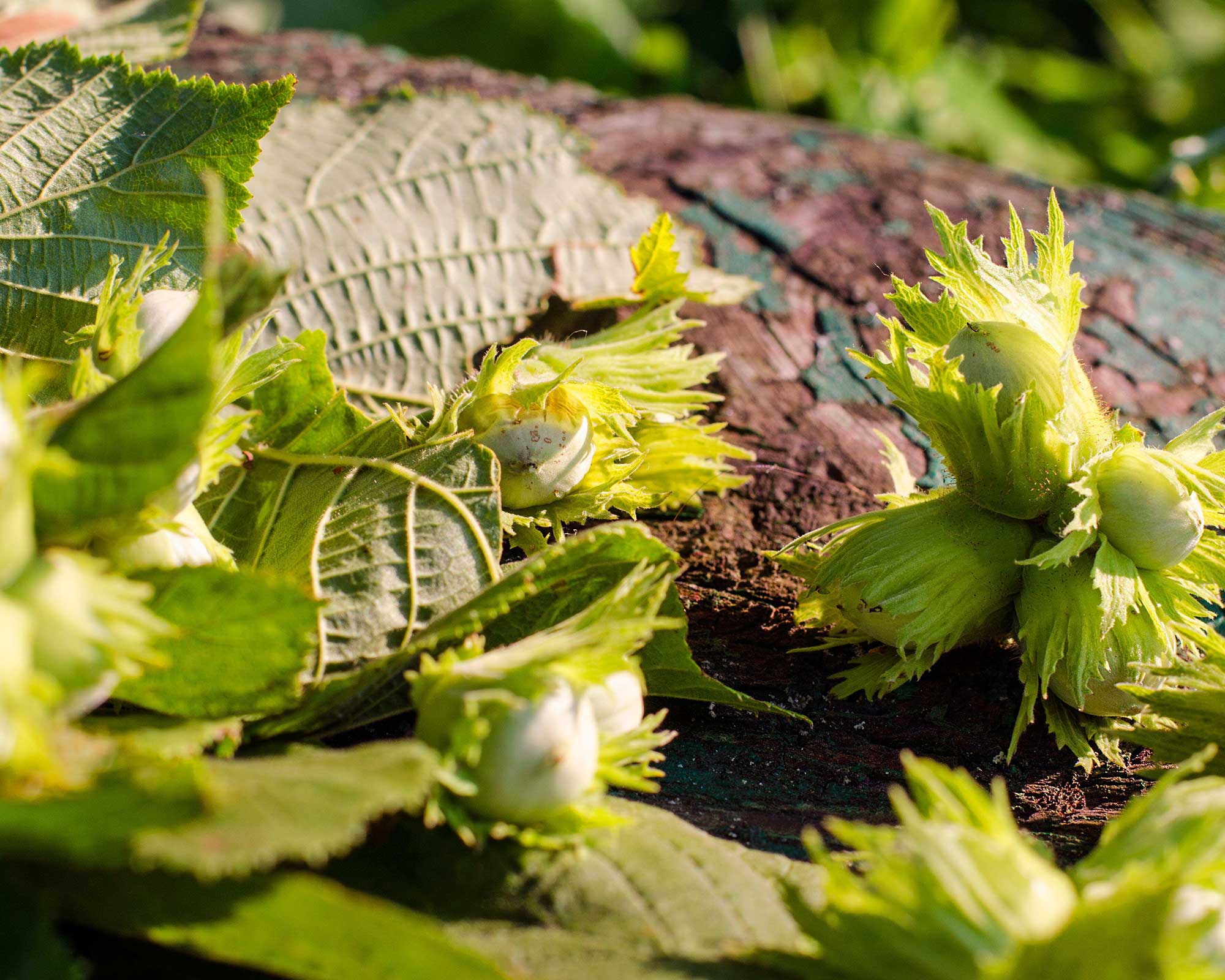
Do you need two hazelnut trees for nuts?
Hazelnuts are monoecious, meaning they have both male flowers (in catkins) and female flowers – though not always simultaneously.
The American hazelnut can self-pollinate but the European is unreliable in this respect and cross-pollination improves yield. When choosing and planting specific cultivars for their nuts, always check with nurseries that they are able to pollinate each other.
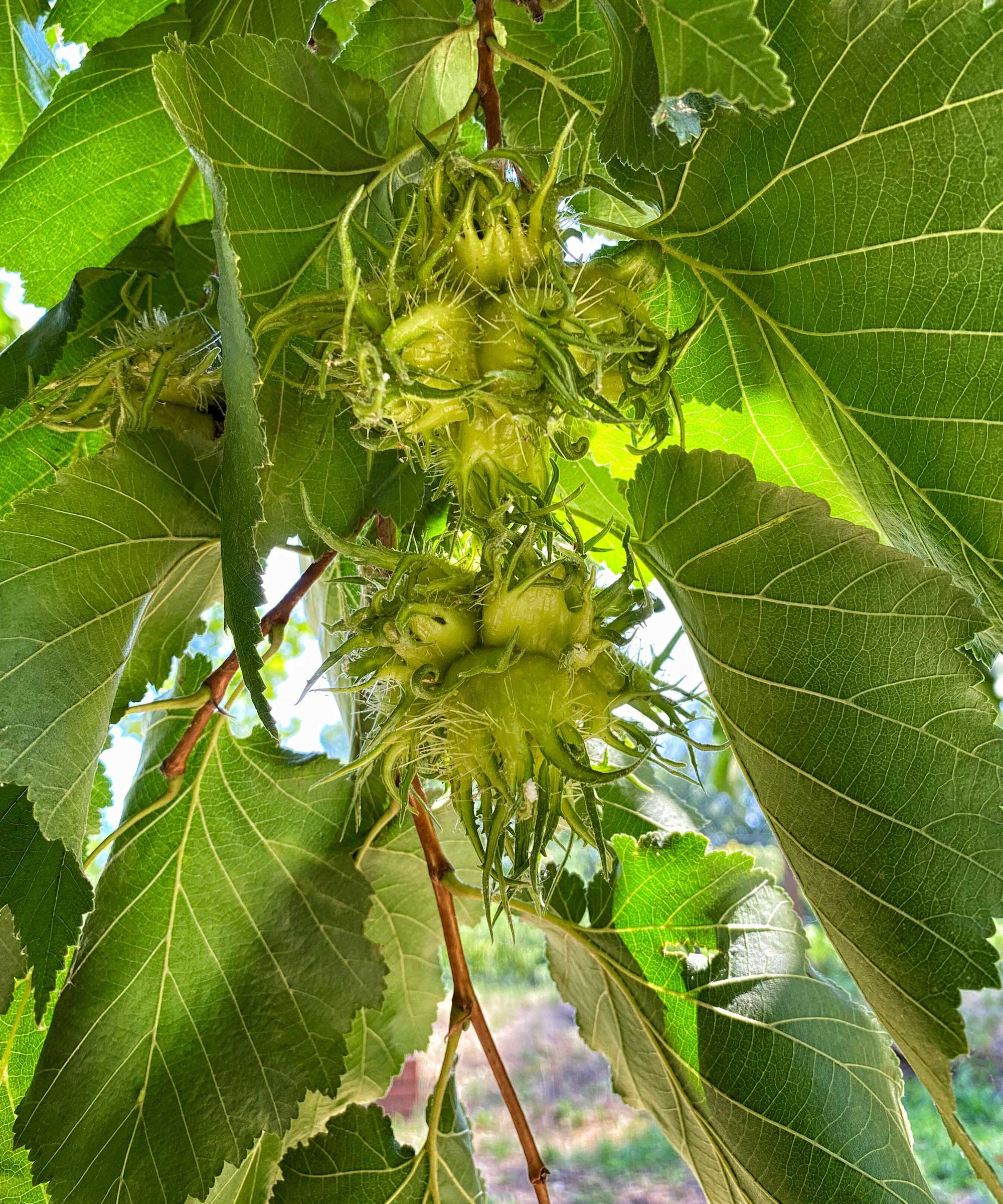
How long does a hazel tree take to grow?
Hazel trees are usually ready to bear nuts after three to five years, depending on whether you start with a seed or a well-grown sapling and how much formative pruning is carried out.
They take six to seven years to yield well. After coppicing, nut production usually resumes in three years.

Having trained at Kew Gardens in London, worked in parks department nurseries and as Glasshouse Supervisor at RHS Wisley, Anne has been a freelance horticulturist since 1986. Anne writes for Amateur Gardening and has been a regular panelist on BBC Radio 4’s Gardeners’ Question Time for 27 years. A large plot full of wildlife habitats, edible and ornamental plants is Anne’s workshop and inspiration.
